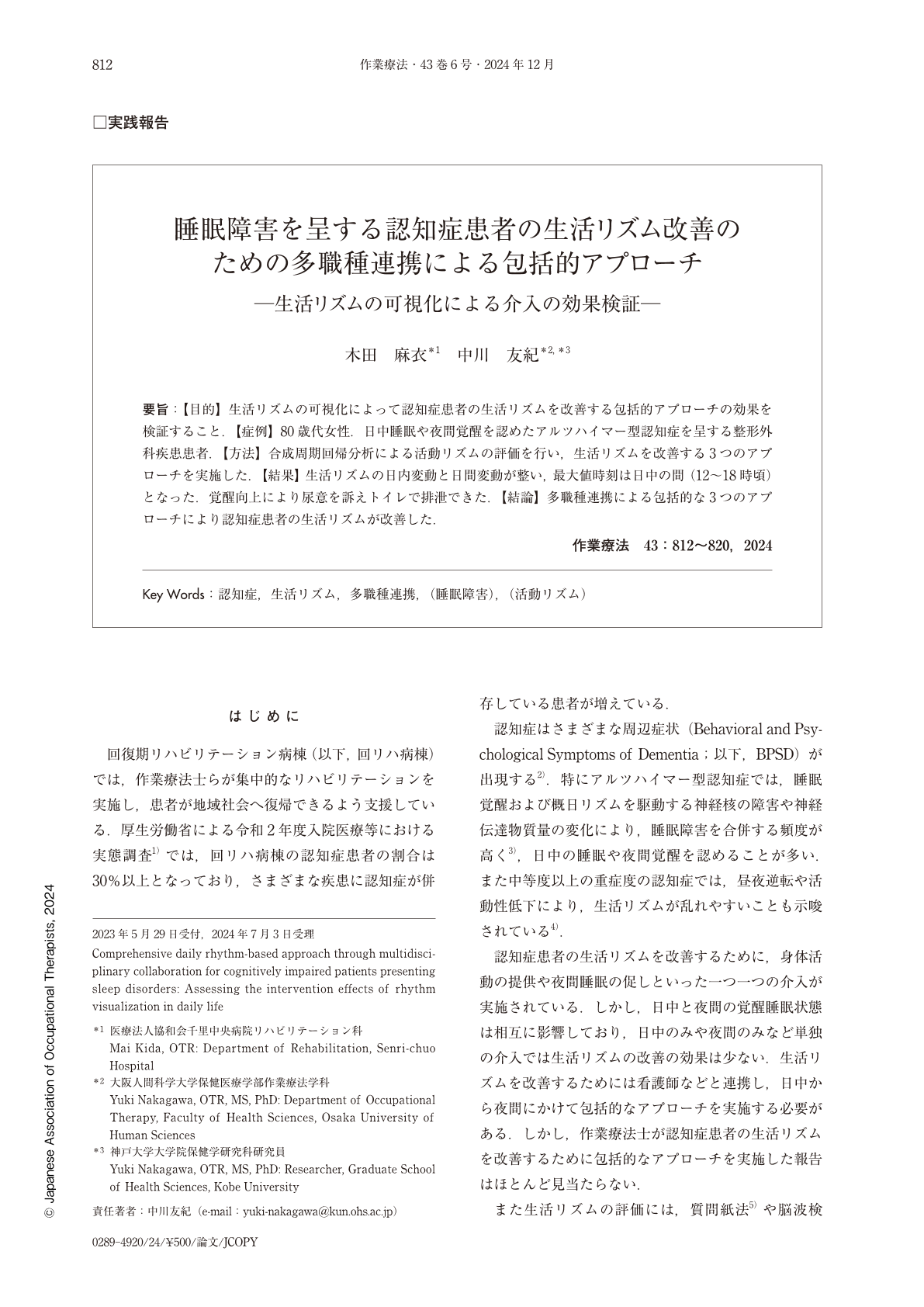Japanese
English
- 販売していません
- Abstract 文献概要
- 1ページ目 Look Inside
- 参考文献 Reference
- サイト内被引用 Cited by
要旨:【目的】生活リズムの可視化によって認知症患者の生活リズムを改善する包括的アプローチの効果を検証すること.【症例】80歳代女性.日中睡眠や夜間覚醒を認めたアルツハイマー型認知症を呈する整形外科疾患患者.【方法】合成周期回帰分析による活動リズムの評価を行い,生活リズムを改善する3つのアプローチを実施した.【結果】生活リズムの日内変動と日間変動が整い,最大値時刻は日中の間(12□18時頃)となった.覚醒向上により尿意を訴えトイレで排泄できた.【結論】多職種連携による包括的な3つのアプローチにより認知症患者の生活リズムが改善した.
[Objective] To implement a comprehensive approach through multidisciplinary collaboration for dementia patients with sleep disorders and verify the intervention effects through the visualization of daily rhythms. [Case] An elderly female in her 80s with Alzheimer's-type dementia presenting daytime sleep and nighttime awakenings, also diagnosed with orthopedic conditions. [Methods] We evaluated activity rhythms using synthetic period regression analysis and implemented three approaches to improve life rhythms. [Results] Both the diurnal and interday variability of the rhythm of life improved, with the subject's maximum value time during the day around 12:00 p.m. to 6:00 p.m. With improved arousal, the subject was able to urinate and defecate in the toilet during the day. [Conclusion] The life rhythms of dementia patients improved through three comprehensive approaches through multidisciplinary collaboration.

Copyright © 2024, Japanese Association of Occupational Therapists. All rights reserved.


